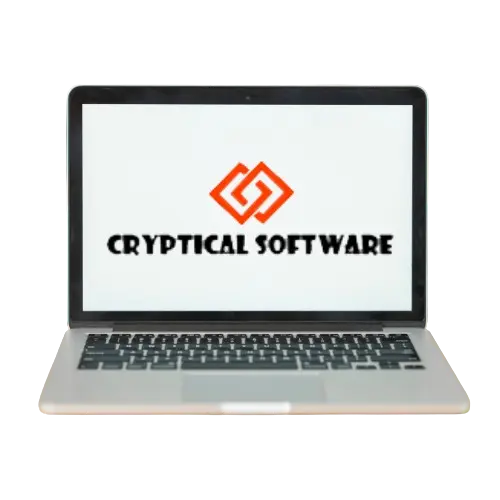Top Website Design Company in India | Expert Web Solutions
- ISO 27001 Certified Company
- +91-63634 12957
- contact@crypticalsoftware.com
- Asia | Australia | Africa | America | Europe

Development Company In Bangalore
Get a Free Estimate
Empowering IoT & Embedded Development Innovation with Cryptical Software
In today’s rapidly evolving technological landscape, the Internet of Things (IoT) and embedded systems are at the forefront of innovation. Cryptical Software is dedicated to empowering developers by providing robust tools and frameworks that enhance the efficiency and capabilities of IoT and embedded projects. By integrating cutting-edge technologies with user-friendly interfaces, Cryptical Software helps developers streamline their workflows and unlock new possibilities for creating interconnected devices. One of the key advantages of using Cryptical Software is its comprehensive suite of development tools, which includes advanced debugging features, real-time analytics, and seamless cloud integration. These tools enable developers to monitor device performance, optimize resource allocation, and ensure reliable communication between devices. With an emphasis on security and scalability, Cryptical Software equips developers with the necessary resources to create IoT solutions that are not only innovative but also secure against potential threats. Furthermore, Cryptical Software fosters a collaborative environment by offering extensive support and resources, including tutorials, community forums, and continuous updates. This commitment to developer empowerment ensures that teams can stay ahead of the curve in an increasingly competitive environment. By harnessing the power of Cryptical Software, developers can drive the next wave of IoT and embedded development, paving the way for groundbreaking innovations that improve daily life and transform industries.
Cryptical Software – Best Company for SEO-Friendly Website Development
We specialize in building fast, responsive, and SEO-optimized websites that help your business rank higher and grow online. Trust Cryptical Software for smart, scalable web solutions.

Harnessing IoT & Embedded Development for Superior Agility and Innovation
Leveraging IoT and embedded development is essential for enhancing agility and fostering innovation in today’s fast-paced market. By enabling rapid prototyping and testing, organizations can significantly shorten their development cycles, allowing ideas to move from concept to reality more swiftly. Additionally, utilizing real-time data from connected devices empowers businesses to make informed decisions, optimize their operations, and respond effectively to evolving customer needs.
Rapid Prototyping
IoT and embedded development enable faster creation and testing of prototypes, allowing teams to iterate quickly and bring ideas to market sooner.
Real-Time Data Utilization
By utilizing real-time data from connected devices, businesses can make informed decisions, optimize operations, and enhance overall productivity.
Scalable Solutions
The flexibility of IoT architectures allows businesses to easily scale their solutions to meet evolving needs, ensuring long-term adaptability and innovation.

Fostering Agility and Innovation with IoT & Embedded Solutions
Overview of IoT and Embedded Development
Contact For More Service
Contact Us via Call for Expert Development Services
+91-63634 12957
Reach Out via Email for Expert Development Services
contact@crypticalsoftware.com
info@crypticalsoftware.com
Definition and Scope
IoT (Internet of Things) refers to the network of interconnected devices that communicate and exchange data over the internet. Embedded development focuses on creating software and hardware systems that perform specific functions within these devices. Together, they enable smart applications across various industries, from healthcare to agriculture.
Architecture Components
The architecture of IoT systems typically includes sensors, actuators, connectivity modules, edge devices, and cloud services. Sensors collect data from the environment, actuators execute physical tasks, and connectivity modules facilitate communication. Edge devices process data locally, while cloud services provide storage and advanced analytics.
Data Collection and Analysis
IoT devices generate vast amounts of data, which can be analyzed to extract valuable insights. This data-driven approach allows organizations to monitor systems in real-time, predict trends, and make informed decisions. Advanced analytics, including machine learning, can identify patterns and optimize processes.
Interoperability and Standards
For IoT systems to function effectively, devices must be able to communicate across different platforms and protocols. Adopting interoperability standards, such as MQTT, CoAP, and HTTP, is crucial for ensuring compatibility between devices from various manufacturers and for enabling seamless integration. This interoperability allows for greater flexibility in designing IoT solutions and facilitates the creation of ecosystems where devices can work together harmoniously. Ultimately, the establishment of these standards is key to unlocking the full potential of IoT technology, driving innovation and enhancing user experiences.
Security Considerations
With the increasing number of connected devices, security has become a critical concern in IoT and embedded development. Implementing robust security measures, such as data encryption, secure authentication, and regular software updates, is vital to protect against cyber threats and data breaches. Additionally, adopting a proactive security framework that includes continuous monitoring and vulnerability assessments can help organizations stay ahead of potential threats and ensure the integrity of their IoT systems.
Scalability and Flexibility
Real-World Applications
Download Our Brochure for Expert Development Services
Experience Seamless Digital
Transformation with Cryptical Software
Cryptical Software Customized Web Development and Digital
Solutions for Business Growth

At Cryptical Software, we provide tailored digital solutions that are essential for your business growth, specializing in innovative website development services. Our team of seasoned professionals collaborates with you to understand your unique vision and specific requirements, ensuring that every solution we create is aligned with your business objectives. We excel in crafting responsive, user-friendly websites that not only enhance your online presence but also improve customer engagement and drive conversions.
In addition to web development, our comprehensive services include custom software development and digital marketing strategies designed to elevate your brand in a competitive digital landscape. We leverage cutting-edge technologies and industry best practices to deliver solutions that foster operational efficiency and streamline your processes.
Work Process
IoT and Embedded Development Work Process in 4 Steps
Requirement Analysis
The first step involves gathering and defining the project requirements. This includes understanding the specific needs of the IoT application, the types of devices involved, and the intended user experience.
System Design
In this phase, developers create a detailed architecture of the IoT system, choosing suitable microcontrollers, sensors, and communication protocols.
Development and Prototyping
Once the design is finalized, the development process begins. This includes writing firmware for embedded systems, developing applications.
Testing and Deployment
The final step involves thorough testing of the system, including unit tests, integration tests, and field tests to identify and fix any issues.
Inquiries
Frequently Asked Questions
IoT, or the Internet of Things, is a network of interconnected physical devices that communicate and exchange data over the internet. These devices can range from household appliances to industrial machines, and they work together to collect and share information.
Embedded development involves designing and programming the hardware and software for IoT devices. This includes creating the microcontrollers and firmware that enable devices to perform specific functions and communicate within the IoT ecosystem.
Some of the key benefits of IoT include enhanced efficiency, real-time monitoring, improved decision-making, cost savings, increased productivity, scalability, enhanced customer experience, and sustainability.
Securing IoT devices often involves implementing encryption, authentication, and regular firmware updates. It’s crucial to continually assess the security of devices to protect against potential cyber threats and vulnerabilities.
Yes, IoT applications are versatile and can be utilized across multiple sectors, including healthcare, agriculture, manufacturing, smart homes, transportation, and smart cities.
